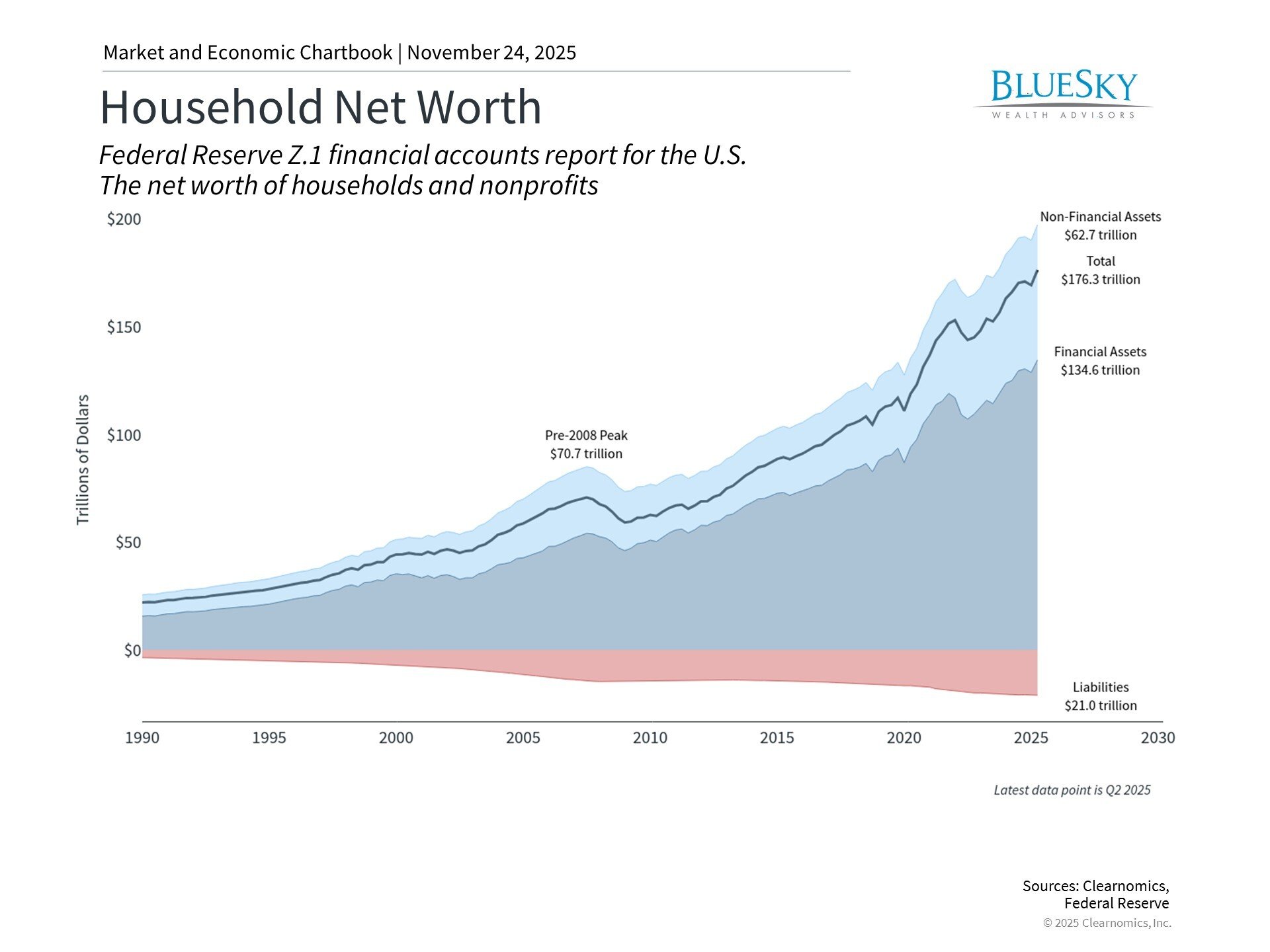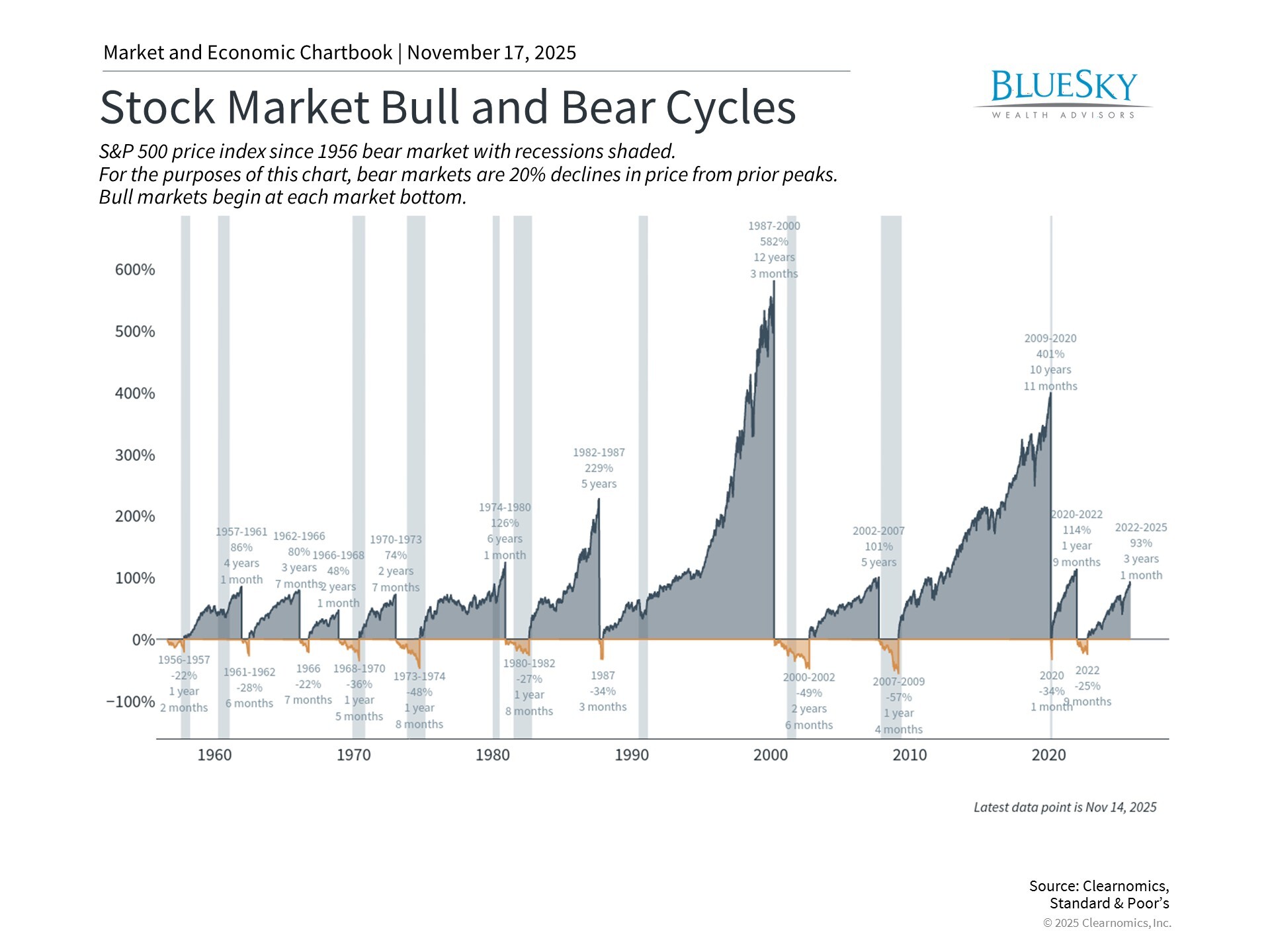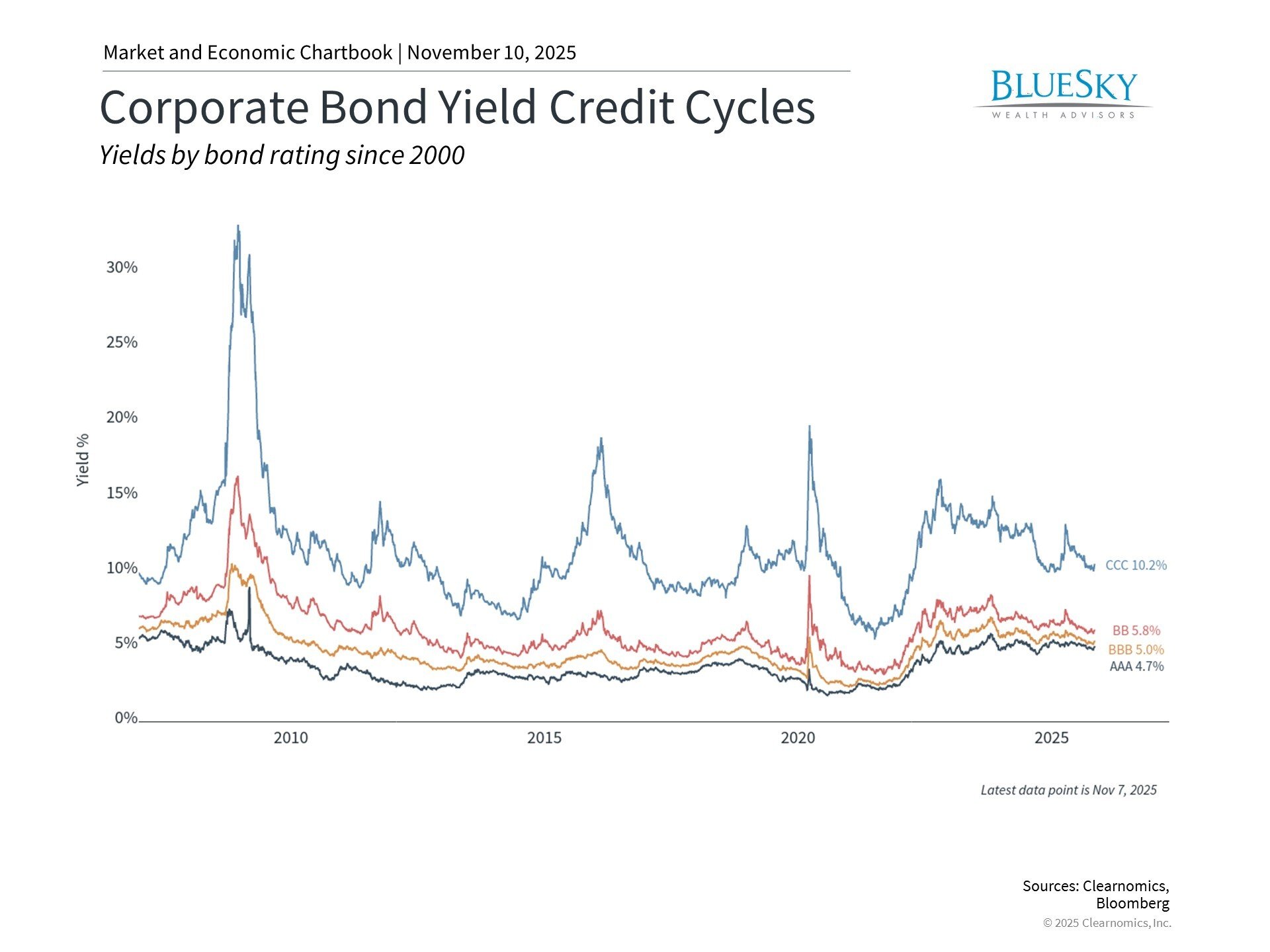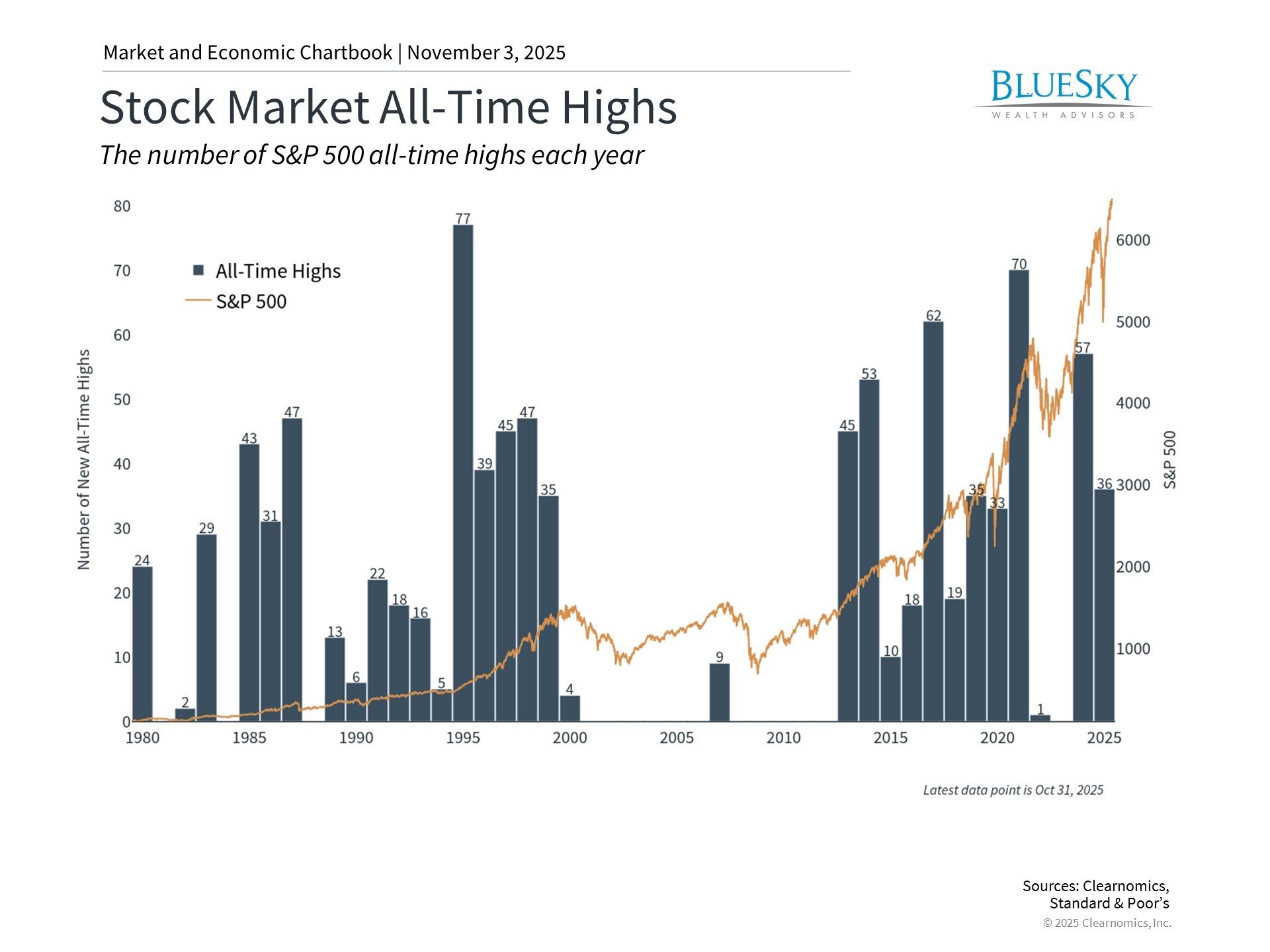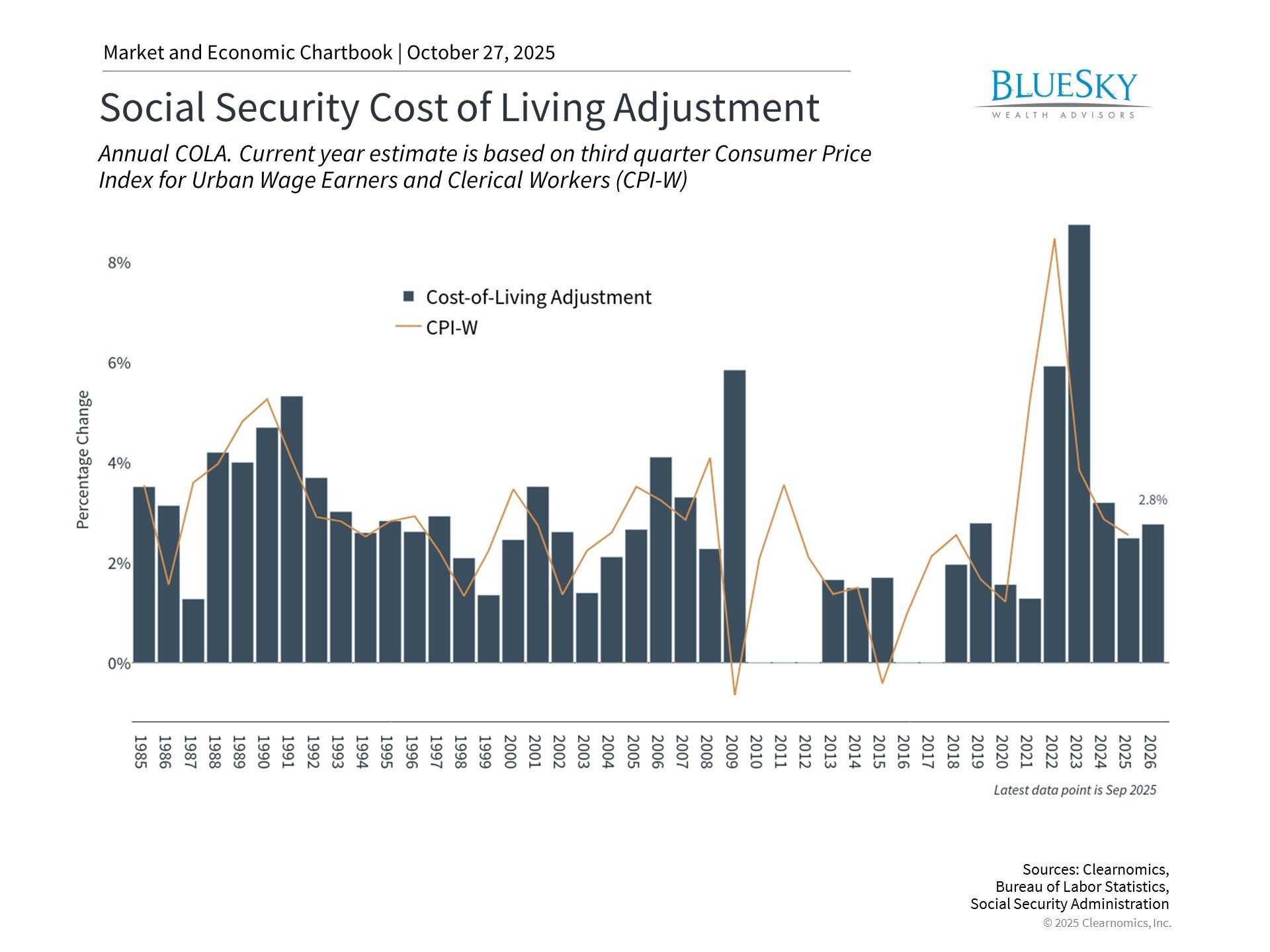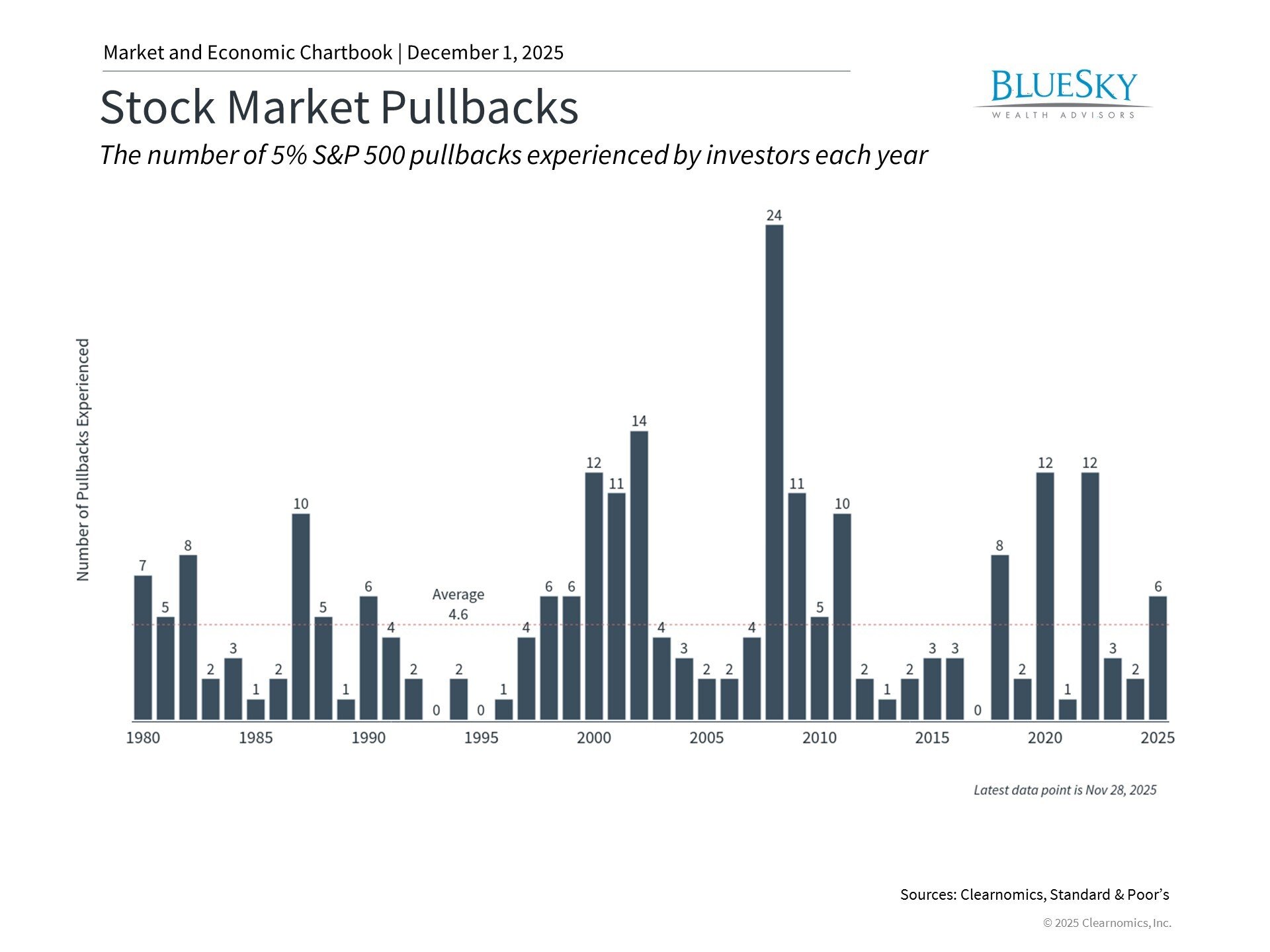
April 2025 Market Review: Navigating Unprecedented Volatility
April 2025 Market Review: Navigating Unprecedented Volatility
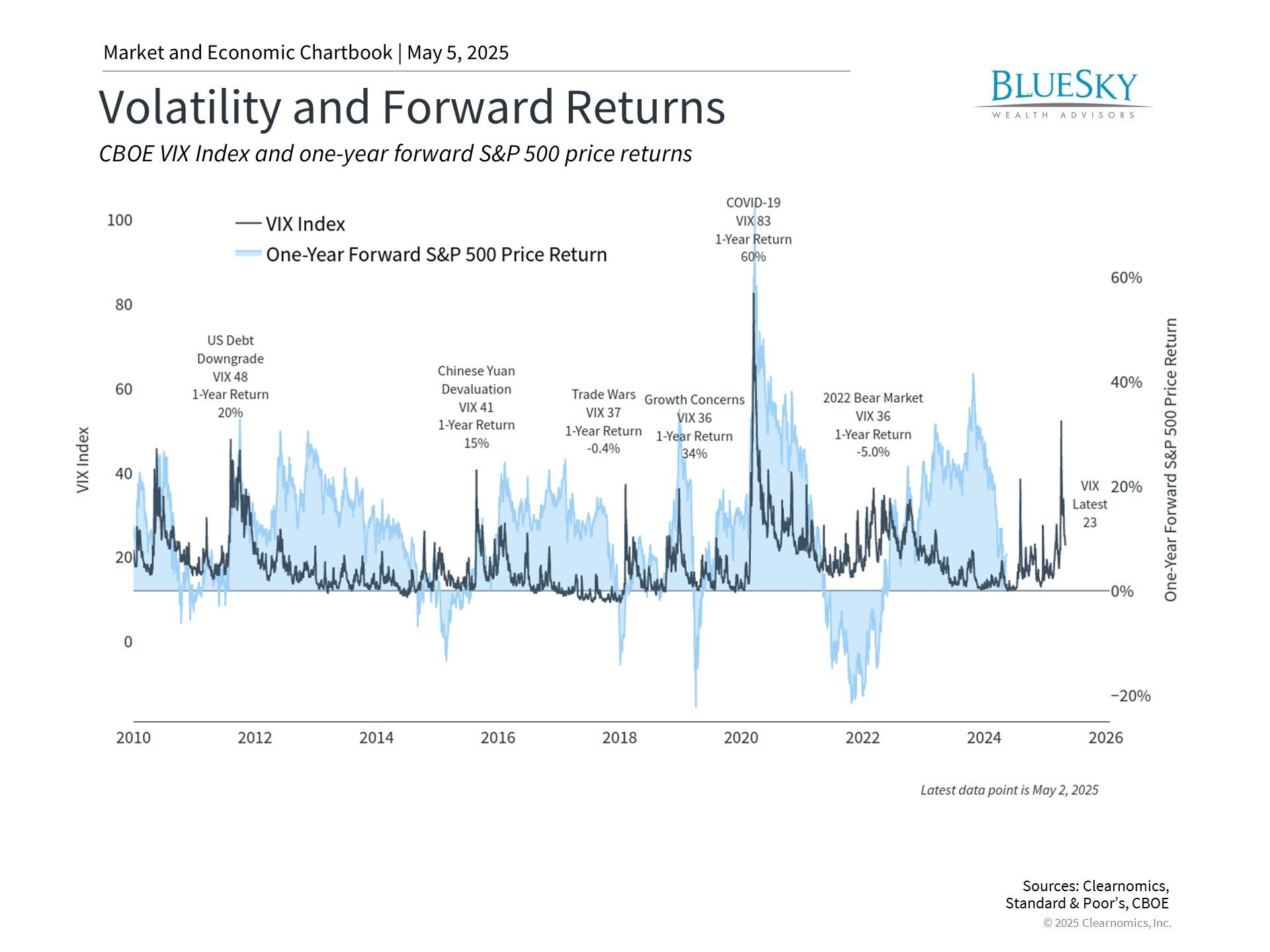
In a remarkable display of market resilience, April 2025 witnessed extreme volatility triggered by unexpected tariff announcements. Despite experiencing a steep 12% decline at one point, the S&P 500 demonstrated remarkable recovery power, finishing the month nearly where it began. Economic data revealed a slight contraction in the first quarter as businesses rushed to accumulate imported inventory ahead of the new tariff implementation. Throughout this turbulence, both bonds and international equities provided positive contributions to diversified investment portfolios, underscoring the enduring wisdom of maintaining diversification during uncertain market periods.
Market and Economic Highlights
- The S&P 500 closed April with a modest 0.8% decline, while the Dow Jones Industrial Average dropped 3.2%, and the Nasdaq managed a 0.9% gain. Through the first four months of 2025, the S&P 500 has retreated 5.3%, the Dow 4.4%, and the Nasdaq 9.7%.
- Fixed income markets showed strength with the Bloomberg U.S. Aggregate Bond index gaining 0.4% in April and posting a 3.2% increase year-to-date. The benchmark 10-year Treasury yield ended April at 4.16%, after fluctuating between 3.99% and 4.49% during the month.
- The U.S. dollar index weakened significantly, falling 4.5% to close at 99.5, reaching a three-year low.
- Bitcoin experienced substantial swings, dropping to $77,052 before recovering to end the month at $94,581.
- March's Consumer Price Index registered a 2.4% year-over-year increase, coming in below expectations and marking the lowest inflation reading since September 2024.
- Retail sales contracted by 0.9%, including a 1.9% reduction in online shopping activity. The household savings rate improved slightly to 4.6%, though still below the 6.2% historical average.
- First-quarter GDP contracted by 0.3%, the first negative reading since Q1 2022, primarily driven by a significant surge in import activity.
Weathering market turbulence: The value of patience
April powerfully reinforced the importance of maintaining investment discipline during market uncertainty. The month began with the White House's April 2 announcement of broad tariffs affecting almost all trading partners. These tariffs significantly exceeded market expectations, sparking concerns about potential inflation increases, global economic deceleration, and possible trade conflicts. Stock markets responded with the most dramatic pullback since the COVID-19 pandemic.
Market volatility reached multi-year highs

Markets found relief when the administration announced a 90-day implementation pause for most countries just days after the initial announcement. Further reassurance came from additional exemptions on technology products and other goods from China, helping to stabilize investor sentiment.
Despite experiencing substantial fluctuations throughout April, major market indices closed with relatively minor changes. Diversified portfolios benefited from positive bond performance and strengthening international equities. Consequently, while the S&P 500 has declined approximately 4.9% year-to-date including dividends, many balanced portfolios have nearly maintained their initial value.
The VIX index, which measures expected market volatility, briefly surpassed 50 for the first time since the pandemic era, as illustrated in the accompanying chart. Notably, many of the month's steepest market declines were quickly followed by substantial rebounds. This pattern serves as an important reminder that market fluctuations occur in both directions, and attempting to time these movements often proves detrimental to investment performance.
While market conditions have somewhat stabilized recently, uncertainty persists, and many factors that drove April's volatility remain relevant. Trade policy developments continue to evolve, though the 90-day implementation delay suggests that worst-case scenarios may be less probable. Investors should anticipate that headlines regarding tariffs could generate additional near-term volatility, even as markets gradually adjust to the evolving trade environment.
Economic growth contracted in Q1

A central concern for investors is whether the new tariffs will simultaneously elevate inflation and suppress economic growth. Recent economic reports indicate that the economy contracted slightly during the first quarter, with GDP declining 0.3%, marking the first economic contraction since early 2022. This decline stems almost exclusively from trade dynamics as businesses accelerated imports to build inventory reserves. Consumer spending growth slowed but remained in positive territory. It's worth noting that these figures represent preliminary GDP estimates and may be revised.
As shown in the accompanying chart, consumer spending has been instrumental in driving economic growth in recent years. Current surveys indicate that consumers are anticipating rapid price increases both in the immediate future and longer term, resulting in historically depressed consumer confidence levels. While these expectations haven't yet significantly impacted actual consumer spending or inflation metrics, they could become increasingly influential in the months ahead.
The complex interplay between economic growth indicators and inflation metrics further complicates the Federal Reserve's decision-making process. Beyond facing challenging interest rate determinations in upcoming months, the central bank's independence was momentarily questioned by the White House, creating additional market uncertainty. Currently, market expectations suggest approximately four Fed rate reductions this year, potentially beginning in July.
These developments also created unusual volatility in bond markets, though yields ultimately finished near their starting points. The 10-year Treasury yield concluded April at 4.16%, while corporate bond yields edged slightly higher. Some market participants expressed concern about potential capital flight from U.S. assets, particularly as the U.S. dollar descended to multi-year lows.
Long-term investors benefit from market participation

Despite recent market challenges, one fundamental investment principle remains evident: maintaining market exposure through volatile periods has historically been crucial for long-term financial success. The accompanying chart illustrates the potential costs of attempting to time market entries and exits after 2% or greater declines. Since positive and negative market days often occur unpredictably, exiting positions after downturns, even briefly, can significantly undermine long-term performance. The temptation to engage in market timing may be particularly strong in the current economic and market environment.
While increased volatility can create discomfort, these periods underscore the importance of adhering to your financial plan, maintaining proper portfolio construction, and identifying potential opportunities. Market turbulence frequently creates attractive valuations across various asset classes, presenting opportunities for investors seeking enhanced diversification and portfolio balance. The S&P 500, for example, has experienced a notable improvement in its price-to-earnings ratio this year.
The bottom line? April's market turbulence demonstrates that significant market fluctuations can occur without warning. Historical evidence consistently shows that disciplined investors who remain focused on long-term financial objectives position themselves more effectively to achieve their goals.
BlueSky Disclosures
Copyright (c) 2025 Clearnomics, Inc. All rights reserved. The information contained herein has been obtained from sources believed to be reliable, but is not necessarily complete and its accuracy cannot be guaranteed. No representation or warranty, express or implied, is made as to the fairness, accuracy, completeness, or correctness of the information and opinions contained herein. The views and the other information provided are subject to change without notice. All reports posted on or via www.clearnomics.com or any affiliated websites, applications, or services are issued without regard to the specific investment objectives, financial situation, or particular needs of any specific recipient and are not to be construed as a solicitation or an offer to buy or sell any securities or related financial instruments. Past performance is not necessarily a guide to future results. Company fundamentals and earnings may be mentioned occasionally, but should not be construed as a recommendation to buy, sell, or hold the company's stock. Predictions, forecasts, and estimates for any and all markets should not be construed as recommendations to buy, sell, or hold any security--including mutual funds, futures contracts, and exchange traded funds, or any similar instruments. The text, images, and other materials contained or displayed in this report are proprietary to Clearnomics, Inc. and constitute valuable intellectual property. All unauthorized reproduction or other use of material from Clearnomics, Inc. shall be deemed willful infringement(s) of this copyright and other proprietary and intellectual property rights, including but not limited to, rights of privacy. Clearnomics, Inc. expressly reserves all rights in connection with its intellectual property, including without limitation the right to block the transfer of its products and services and/or to track usage thereof, through electronic tracking technology, and all other lawful means, now known or hereafter devised. Clearnomics, Inc. reserves the right, without further notice, to pursue to the fullest extent allowed by the law any and all criminal and civil remedies for the violation of its rights.

